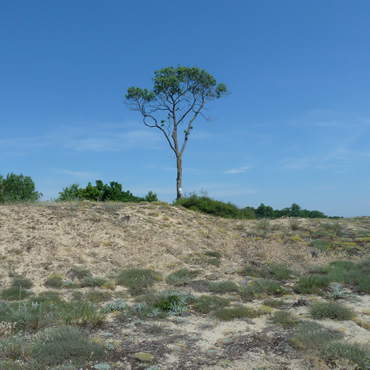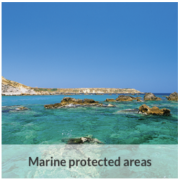0.25 degree
Type of resources
Available actions
Topics
Keywords
Contact for the resource
Provided by
Years
Formats
Representation types
Update frequencies
status
Resolution
-

-
Water body ammonium - Monthly Climatology for the European Seas for the period 1960-2020 on the domain from longitude -45.0 to 70.0 degrees East and latitude 24.0 to 83.0 degrees North. Data Sources: observational data from SeaDataNet/EMODnet Chemistry Data Network. Description of DIVA analysis: The computation was done with the DIVAnd (Data-Interpolating Variational Analysis in n dimensions), version 2.7.9, using GEBCO 30sec topography for the spatial connectivity of water masses. Horizontal correlation length and vertical correlation length vary spatially depending on the topography and domain. Depth range: 0.0, 5.0, 10.0, 15.0, 20.0, 25.0, 30.0, 35.0, 40.0, 45.0, 50.0, 55.0, 60.0, 65.0, 70.0, 75.0, 80.0, 85.0, 90.0, 95.0, 100.0, 125.0, 150.0, 175.0, 200.0, 225.0, 250.0, 275.0, 300.0, 325.0, 350.0, 375.0, 400.0, 425.0, 450.0, 475.0, 500.0, 550.0, 600.0, 650.0, 700.0, 750.0, 800.0, 850.0, 900.0, 950.0, 1000.0, 1050.0, 1100.0, 1150.0, 1200.0, 1250.0, 1300.0, 1350.0, 1400.0, 1450.0, 1500.0, 1550.0, 1600.0, 1650.0, 1700.0, 1750.0, 1800.0, 1850.0, 1900.0, 1950.0, 2000.0, 2100.0, 2200.0, 2300.0, 2400.0, 2500.0, 2600.0, 2700.0, 2800.0, 2900.0, 3000.0, 3100.0, 3200.0, 3300.0, 3400.0, 3500.0, 3600.0, 3700.0, 3800.0, 3900.0, 4000.0, 4100.0, 4200.0, 4300.0, 4400.0, 4500.0, 4600.0, 4700.0, 4800.0, 4900.0, 5000.0, 5100.0, 5200.0, 5300.0, 5400.0, 5500.0 m. Units: umol/l. The horizontal resolution of the produced DIVAnd analysis is 0.25 degrees.
-
The Advanced Microwave Scanning Radiometer (AMSR-E) was launched on 4 May 2002, aboard NASA's Aqua spacecraft. The National Space Development Agency of Japan (NASDA) provided AMSR-E to NASA as an indispensable part of Aqua's global hydrology mission. Over the oceans, AMSR-E is measuring a number of important geophysical parameters, including sea surface temperature (SST), wind speed, atmospheric water vapor, cloud water, and rain rate. A key feature of AMSR-E is its capability to see through clouds, thereby providing an uninterrupted view of global SST and surface wind fields. Remote Sensing Systems (RSS, or REMSS) is the provider of these SST data for the Group for High Resolution Sea Surface Temperature (GHRSST) Project, performs a detailed processing of AMSR-E instrument data in two stages. The first stage produces a near-real-time (NRT) product (identified by "_rt_" within the file name) which is made as available as soon as possible. This is generally within 3 hours of when the data are recorded. Although suitable for many timely uses the NRT products are not intended to be archive quality. "Final" data (currently identified by "v7" within the file name) are processed when RSS receives the atmospheric model National Center for Environmental Prediction (NCEP) Final Analysis (FNL) Operational Global Analysis. The NCEP wind directions are particularly useful for retrieving more accurate SSTs and wind speeds. This dataset adheres to the GHRSST Data Processing Specification (GDS) version 2 format specifications.
-
-

-
A Group for High Resolution Sea Surface Temperature (GHRSST) global Level 4 sea surface temperature analysis produced daily on a 0.25 degree grid at the NOAA National Centers for Environmental Information. This product uses optimal interpolation (OI) by interpolating and extrapolating SST observations from different sources, resulting in a smoothed complete field. The sources of data are satellite (AVHRR) and in situ platforms (i.e., ships and buoys), and the specific datasets employed may change over. At the marginal ice zone, sea ice concentrations are used to generate proxy SSTs. A preliminary version of this file is produced in near-real time (1-day latency), and then replaced with a final version after 2 weeks. Note that this is the AVHRR-ONLY (AVHRR-OI), available from September 1, 1981, but there is a companion SST product that includes microwave satellite data, available from June 2002.
-
A Group for High Resolution Sea Surface Temperature (GHRSST) global Level 4 sea surface temperature analysis is produced daily on a 0.25 degree grid at the NOAA National Centers for Environmental Information. This product uses optimal interpolation (OI) by interpolating and extrapolating SST observations from different sources, resulting in a smoothed complete field. The sources of data are satellite (AVHRR) and in situ platforms (i.e., ships, buoys, and Argo floats above 5m depth), and the specific datasets employed may change over time. In the regions with sea-ice concentration higher than 30%, freezing points of seawater are used to generate proxy SSTs. A preliminary version of this file is produced in near-real time (1-day latency), and then replaced with a final version after 2 weeks. The v2.1 is updated from the AVHRR_OI-NCEI-L4-GLOB-v2.0 data. Major improvements include: 1) In-Situ ship and buoy data changed from the NCEP Traditional Alphanumeric Codes (TAC) to the NCEI merged TAC + Binary Universal Form for the Representation (BUFR) data, with large increase of buoy data included to correct satellite SST biases; 2) Addition of Argo float observed SST data as well, for further correction of satellite SST biases; 3) Satellite input from the METOP-A and NOAA-19 to METOP-A and METOP-B, removing degraded satellite data; 4) Revised ship-buoy SST corrections for improved accuracy; and 5) Revised sea-ice-concentration to SST conversion to remove warm biases in the Arctic region (Banzon et al. 2020). These updates only apply to granules after Jan. 1st, 2016. The data pre 2016 are still the same as v2.0 except for metadata upgrades.
-
A Group for High Resolution Sea Surface Temperature (GHRSST) global Level 4 sea surface temperature analysis produced daily on a 0.25 degree grid at the NOAA National Centers for Environmental Information. This product uses optimal interpolation (OI) by interpolating and extrapolating SST observations from different sources, resulting in a smoothed complete field. The sources of data are satellite (AVHRR) and in situ platforms (i.e., ships and buoys), and the specific datasets employed may change over. At the marginal ice zone, sea ice concentrations are used to generate proxy SSTs. A preliminary version of this file is produced in near-real time (1-day latency), and then replaced with a final version after 2 weeks. Note that this is the AVHRR-ONLY (AVHRR-OI), available from September 1, 1981, but there is a companion SST product that includes microwave satellite data, available from June 2002.
-

-
A Group for High Resolution Sea Surface Temperature (GHRSST) global Level 4 sea surface temperature analysis is produced daily on a 0.25 degree grid at the NOAA National Centers for Environmental Information. This product uses optimal interpolation (OI) by interpolating and extrapolating SST observations from different sources, resulting in a smoothed complete field. The sources of data are satellite (AVHRR) and in situ platforms (i.e., ships, buoys, and Argo floats above 5m depth), and the specific datasets employed may change over time. In the regions with sea-ice concentration higher than 30%, freezing points of seawater are used to generate proxy SSTs. A preliminary version of this file is produced in near-real time (1-day latency), and then replaced with a final version after 2 weeks. The v2.1 is updated from the AVHRR_OI-NCEI-L4-GLOB-v2.0 data. Major improvements include: 1) In-Situ ship and buoy data changed from the NCEP Traditional Alphanumeric Codes (TAC) to the NCEI merged TAC + Binary Universal Form for the Representation (BUFR) data, with large increase of buoy data included to correct satellite SST biases; 2) Addition of Argo float observed SST data as well, for further correction of satellite SST biases; 3) Satellite input from the METOP-A and NOAA-19 to METOP-A and METOP-B, removing degraded satellite data; 4) Revised ship-buoy SST corrections for improved accuracy; and 5) Revised sea-ice-concentration to SST conversion to remove warm biases in the Arctic region (Banzon et al. 2020). These updates only apply to granules after Jan. 1st, 2016. The data pre 2016 are still the same as v2.0 except for metadata upgrades. Version Description:
 Catalogue PIGMA
Catalogue PIGMA